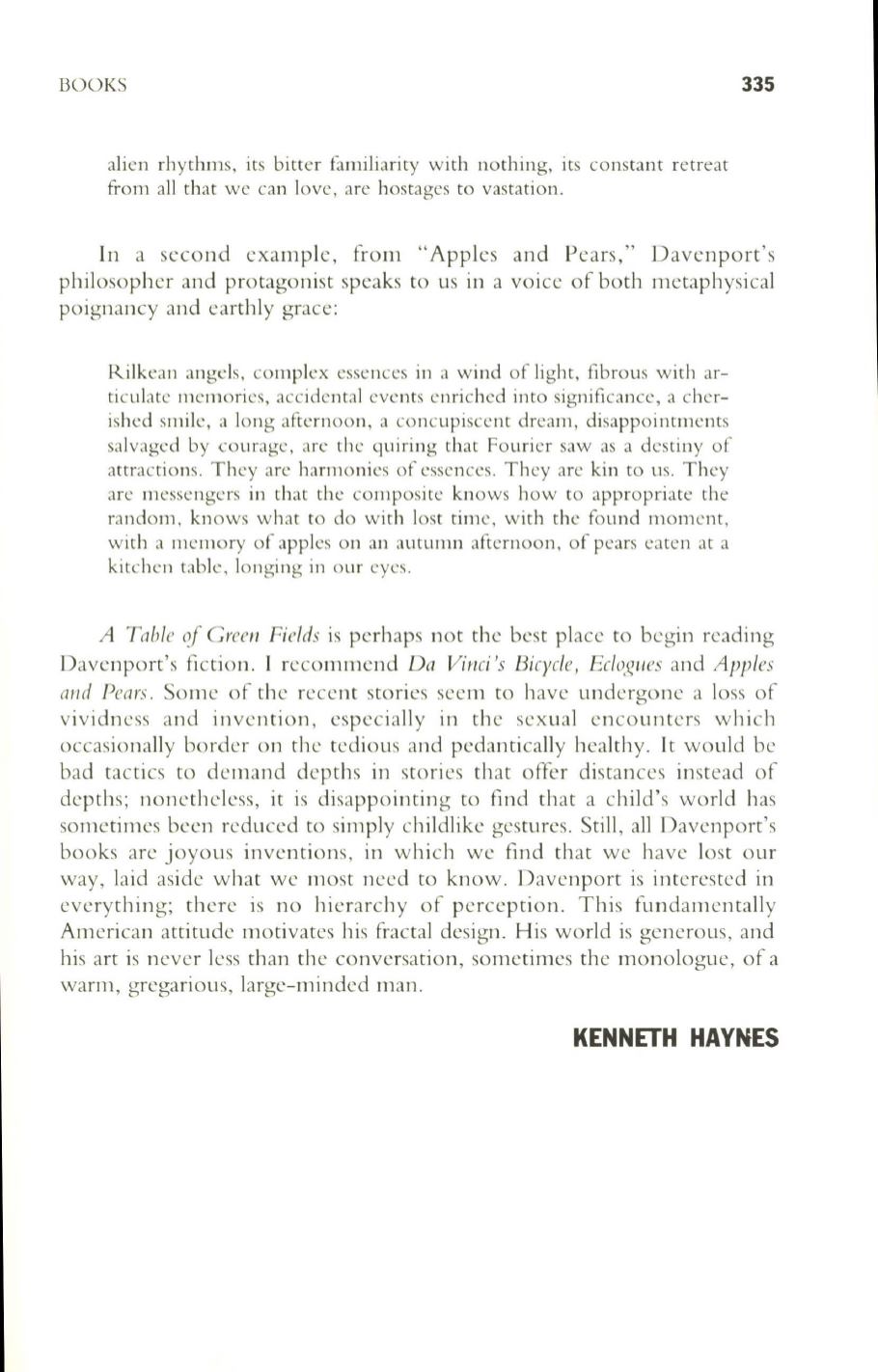
BOOKS
ali e n rh ythms, its bitter famili arity with no thin g, its constant retreat
from all that w e ca n love, are hostages to vastati on .
335
In
a second exampl e, from " Apples and Pears," Davenport 's
philosopher and protagoni st speaks to us in a voice of both metaphysical
poignancy and earthly grac e:
Rilkea n angels, complex esse nces in a wind of li ght , fibrous w ith ar–
ti cul ate mem o ri es, acc idental events enri ched into significa nce , a cher–
ished sm il e, a long afternoon , a concupisce nt dream , disappo intments
sa lvaged by courage, are th e quirin g that Fourier saw as a destin y o f
attracti ons. They are harmo ni es o f essences. They are kin
to
u s. They
are messenge rs in th at th e compos ite kn ows how to appropri ate th e
rand om , kn ows w hat
to
do w ith lost time, w ith th e found moment,
w ith a memo ry o f appl es o n an autumn aftern oon , of pears eaten at a
ki tchen table, longing in our eyes.
A Table
oj
Greell Fields
is perhaps not the best place to begin reading
Davenpo rt's fi ction. I recommend
Da
Vinci's
Bicycle, EcloJ? lIes
and
Apples
all d Pea rs.
Some o f th e recent sto ries seem to have undergo ne a loss of
vividn ess and invention , espe ciall y in th e sexual en counte rs whi ch
occasionall y bo rder on th e tedious and pedanti call y he althy. It would be
bad tac ti cs
to
demand depth s in sto ri es that o ffer distances instead o f
depth s; non eth e less, it is di sappo intin g to find that a child' s wo rld has
sometimes been redu ced to simply childlike ges tures. Still , all D avenpo rt's
books are j oyou s in ve nti o ns, in whi ch w e find that we have los t o ur
way, laid as ide what we most ne ed to know . Davenport is interested in
eve rythin g; th er e is no hierarchy o f percepti o n . This fund amentall y
Ameri can attitude mo tivates hi s fractal design. His world is generous, and
his art is never less th an the conversa ti o n , sometimes the monologue, o f a
warm , grega ri ou s, large-minded man .
KENNETH HAYNES


